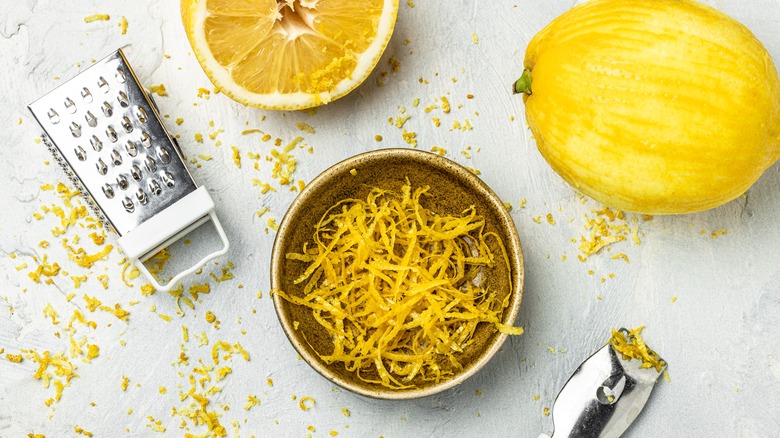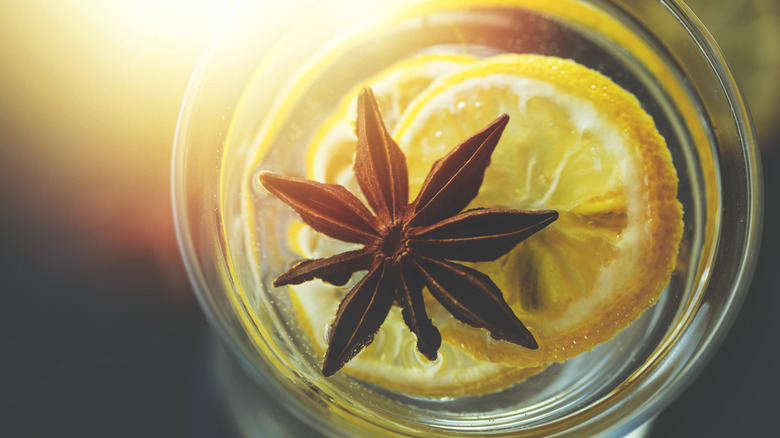The Easy Ratio To Remember When Swapping Citrus Zest For Extract
Lemon zest is a flavor powerhouse. That thin yellow layer of the peel, which doesn't include the thick layer of white pith that protects the lemony fruit, is packed with potent oils that add all kinds of feels to your taste buds. In fact, the lemon zest is actually sweeter than the tangy juice and can really enhance those recipes where this yellow fruit plays a role.
But if lemons aren't a weekly grocery store staple and you find you need some for your creamy lemon pasta or you are whipping up a pretty lemon chiffon cake your mouth can't wait to sink your teeth into, don't stress. As it turns out, you can use an extract, and there is an easy ratio to remember that will make swapping the two a cinch. Simply use half the amount of extract you would use if you had access to some zest.
Make your own
The key takeaway when substituting extract for zest is you want to use less extract than you would zest. Remember, you can always add more if you aren't getting the lemony punch you want, but it isn't as easy to remove the flavor.
If you don't keep lemon extract in your baking supplies not to worry. Simply borrow a page from Ina Garten's culinary playbook. Garten is famous for making her own vanilla extract, but it might surprise you to learn you can make your own lemon extract, too. All you need are slices of lemon peel and alcohol. The alcohol (vodka works well here) is going to soak up all the sweetness in those peels, minus the sourness. You can also add some spices like anise or cinnamon to create a unique lemony flavor. However, it will take about three months for the flavor to develop, so plan accordingly.

